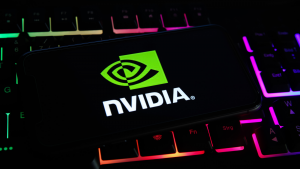I feel that every investor should allocate at least some of their portfolio to these disruptive stocks. The reason being is that companies driving major technological and business model innovations have immense upside potential.
Owning at least some of these shares could improve one’s risk-adjusted returns over the long-run, as well as balance out their portfolios.
It should be noted, however, that investing in these disruptive stocks assumes a significant amount of uncertainty. There’s no guarantee these stocks will continue to stay as winners in the long-run, but odds are on investors’ side that they could be.
So here are seven disruptive stocks for you to add to your portfolio in March this year. Don’t miss out.
PayPal (PYPL)

PayPal (NASDAQ:PYPL) expanded into cryptocurrency, supporting transactions in Bitcoin (BTC-USD) and other digital currencies. It’s also one of those fintech disrupters that is changing up the industry.
In 2024, PayPal is eyeing a significant year, aiming to achieve a non-GAAP EPS of $6, marking a potential period of profitability. An analyst also has projected an $88.06 fair stock price for PayPal, suggesting a substantial upside based on fundamentals.
What I like about PYPL is that it’s one of the few U.S. fintech companies expanding into China. It’s focusing on powering cross-border trades, and positions it uniquely in the vast Chinese market.
This, combined with its expected EPS expansion and a projected increase for its stock price, makes it one of those disruptive stocks that investors should pay attention to. One can’t go wrong with this outlook as well as its robust competitive moat that gives it an edge over its peers.
Riot Blockchain (RIOT)

Riot Blockchain (NASDAQ:RIOT) specializes in cryptocurrency mining with significant investments in Bitcoin mining capacity and infrastructure.
The reason I chose RIOT as one of those disruptive stocks is due to the huge effort it has made to modernize and expand its cryptocurrency mining operations. I think that it’s word-class, and it has made plans to strengthen it.
The company has announced the purchase of 33,280 “next-generation” Bitcoin miners for its Texas facility at a cost of $162.9 million, which will add 7.6 exahashes per second (EH/s) to its self-mining capacity.
These new rigs are built specifically for immersion cooling systems and are expected to enhance fleet efficiency significantly.
RIOT is also developing Phase 1 of its Corsicana Facility, which will add an additional 400 megawatts of capacity, with the goal of achieving a total self-mining hash rate capacity of 29 EH/s by the end of 2024 and 38 EH/s upon full deployment in 2025 €‹.
Nvidia (NVDA)

Nvidia (NASDAQ:NVDA) has become a disrupter in artificial intelligence and computing through its GPUs, essential for gaming, AI applications, and more.
I think that the best is yet to come for NVDA investors, which is almost totally due to it being one of those disruptive stocks.
Some analysts agree with that sentiment. For instance, analyst Ming-Chi Kuo anticipates a 150% jump in NVDA’s AI graphics card shipments in 2024, thanks to the launch of two new AI GPUs and a big backlog of current graphics cards.
A further analysis from Valuentum suggests that NVDA’s fair value estimate could grow significantly over the coming fiscal years.
I also believe that with its predicted top and expansions that a share price appreciation is on the cards, this is despite it trading at 39 times forward earnings.
NVDA’s position in the market as one of those disruptive stocks is perhaps self-evident from its 2 trillion dollar market cap at the time of writing and its multiple growth drivers of semiconductors, AI, blockchain, gaming, and more.
Upwork (UPWK)

As the largest freelance platform, Upwork (NASDAQ:UPWK) counts among its benefits the growing gig economy and freelancing trend.
Because of its size and prominence in the market, the decision it makes spreads to other platforms as well, with alternative sites such as Freelancer taking note of its moves.
Furthermore,Upwork has been proactive in enhancing its platform, launching new generative AI tools and services to centralize skilled AI talent and work.
It has also expanded its ecosystem to include gigs, similar to what made Fiverr (NYSE:FVRR) so successful in the first place.
I believe that AI one will day drop from our vernacular as a buzzword and instead become common parlance. UPWK is spearheading this revolution, and will continue to be an important conduit due to its centralization of AI tools and talent on its platform.
Analysts project continued revenue and earnings growth for Upwork, with estimates showing a gradual increase in revenue reaching $973 million by 2026, alongside significant earnings growth.
Block (SQ)

Block (NYSE:SQ) has shown strong growth, especially in digital payments and cryptocurrency services €‹.
IT’s one of the most successful fintech companies that have successfully embraced the cryptocurrency boom, along with its highly popular CashApp.
I think SQ is one of those disruptive stocks because of this crypto integration, as well as its continued success as a fintech platform.
SQ is committed to enhancing its platform via investments in AI to enhance its financial offerings, including fraud detection algorithms and insights into consumer behavior.
Looking ahead, SQ has forecast a gross profit for FY2024 of at least $8.65 billion, which surpasses the consensus estimate of $8.55 billion. This guidance has contributed to a positive market reaction, with shares up just under 10% year-to-date.
For the upcoming earnings report, SQ is expected to report a significant increase in earnings per share for the fourth quarter, with consensus estimates forecasting a jump of 168.2% from the year-ago period. Revenue is also expected to grow by 22% year-over-year.
Upstart Holdings (UPST)

Upstart Holdings (NASDAQ:UPST) uses AI to improve loan approval processes, identifying reliable borrowers often overlooked by traditional banks.
Its business model itself makes it one of those disruptive stocks, but I feel that there’s more disruption in store for the market because of its expanding presence.
Like with many companies intending to disrupt industries, UPST is facing headwinds as it navigates a highly complex environment.
At present, it’s attempting to reduce the loans on its balance sheet and guide toward improving revenues.
Framing this is that the company reported better-than-expected sales in Q4 of FY2023, with revenue reaching $140.3 million against analyst estimates of $135.3 million.
Despite these positive signs, Upstart’s guidance for Q1 2024 has raised some eyebrows. The company is expecting revenue of $125 million at the midpoint for Q1 2024, which is significantly below the analyst estimates of $151.3 million.
UPST is a disruptive stock on a mission, and I feel these headwinds are short term rather than structural.
Affirm (AFRM)

Affirm (NASDAQ:AFRM) is leading the Buy Now, Pay Later sector, offering flexible payment options for consumers.
The key of AFRM’s disruption in the BNPL space has been the growth of its direct-to-consumer business. It’s also seen the growth of the Affirm Card, which reached a Gross Merchandise Value of about $397 million, supported by over 700 thousand active consumers.
It has a consumer base of 17.6 million and 279,000 active merchants at the time of writing. The company anticipates GMV to exceed $25.25 billion in FY 2024, with an Adjusted Operating Margin of over 11%
Also the company’s adaptability to interest rate changes and its positive credit outcomes have positioned it well for sustained growth, as well as firmly positioned it in the market as one of those disruptive stocks for investors to own and enjoy.
Trading at just 5 times sales, I think this pick also undervalued, and that the best is yet to come for this young company.
On the date of publication, Matthew Farley did not have (either directly or indirectly) any positions in the securities mentioned in this article. The opinions expressed are those of the writer, subject to the InvestorPlace.com Publishing Guidelines.
Matthew started writing coverage of the financial markets during the crypto boom of 2017 and was also a team member of several fintech startups. He then started writing about Australian and U.S. equities for various publications. His work has appeared in MarketBeat, FXStreet, Cryptoslate, Seeking Alpha, and the New Scientist magazine, among others.
